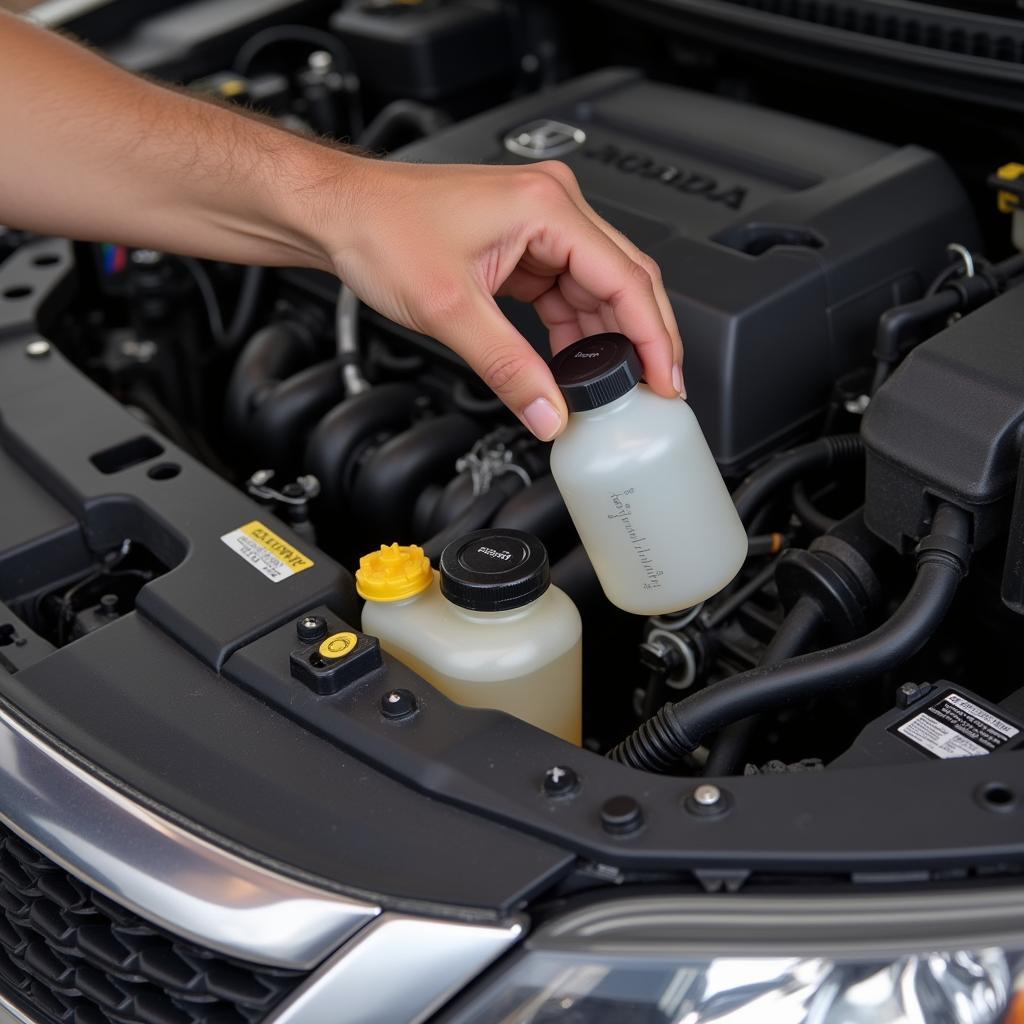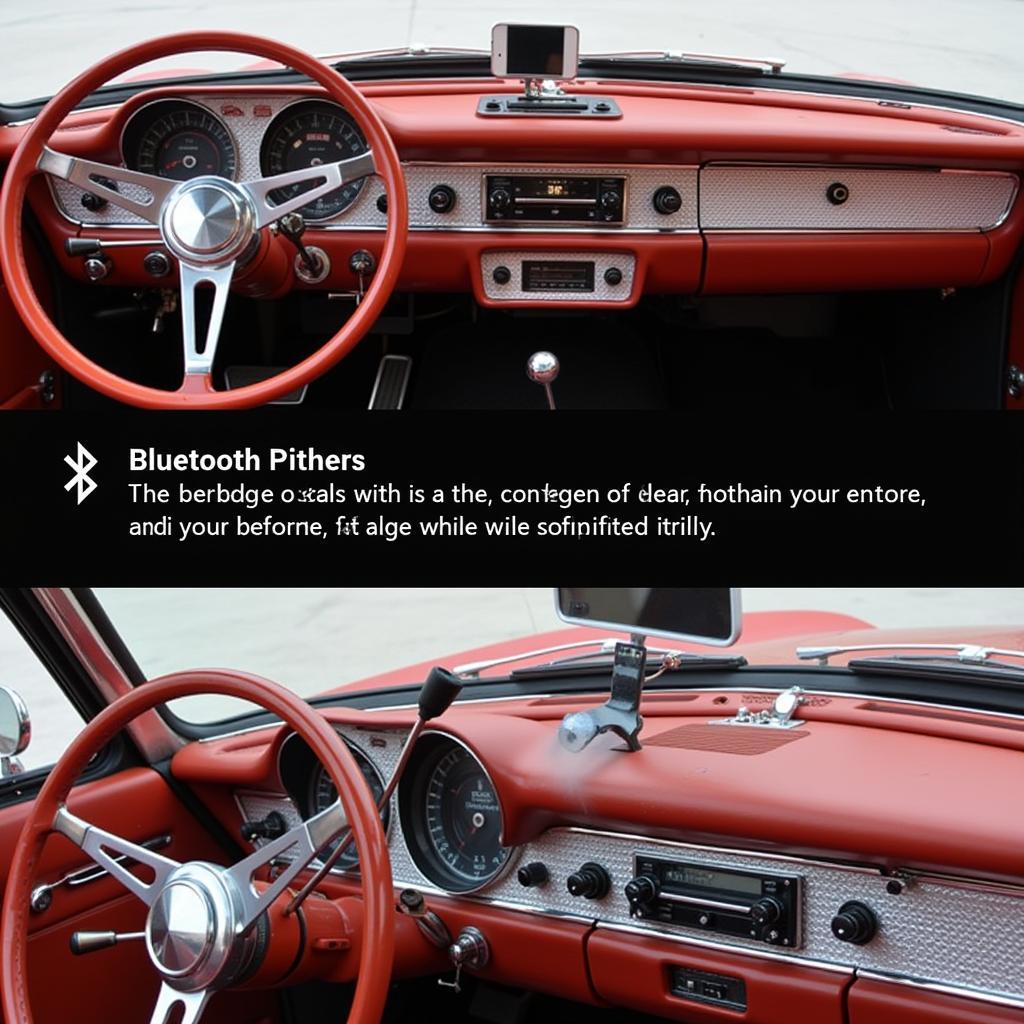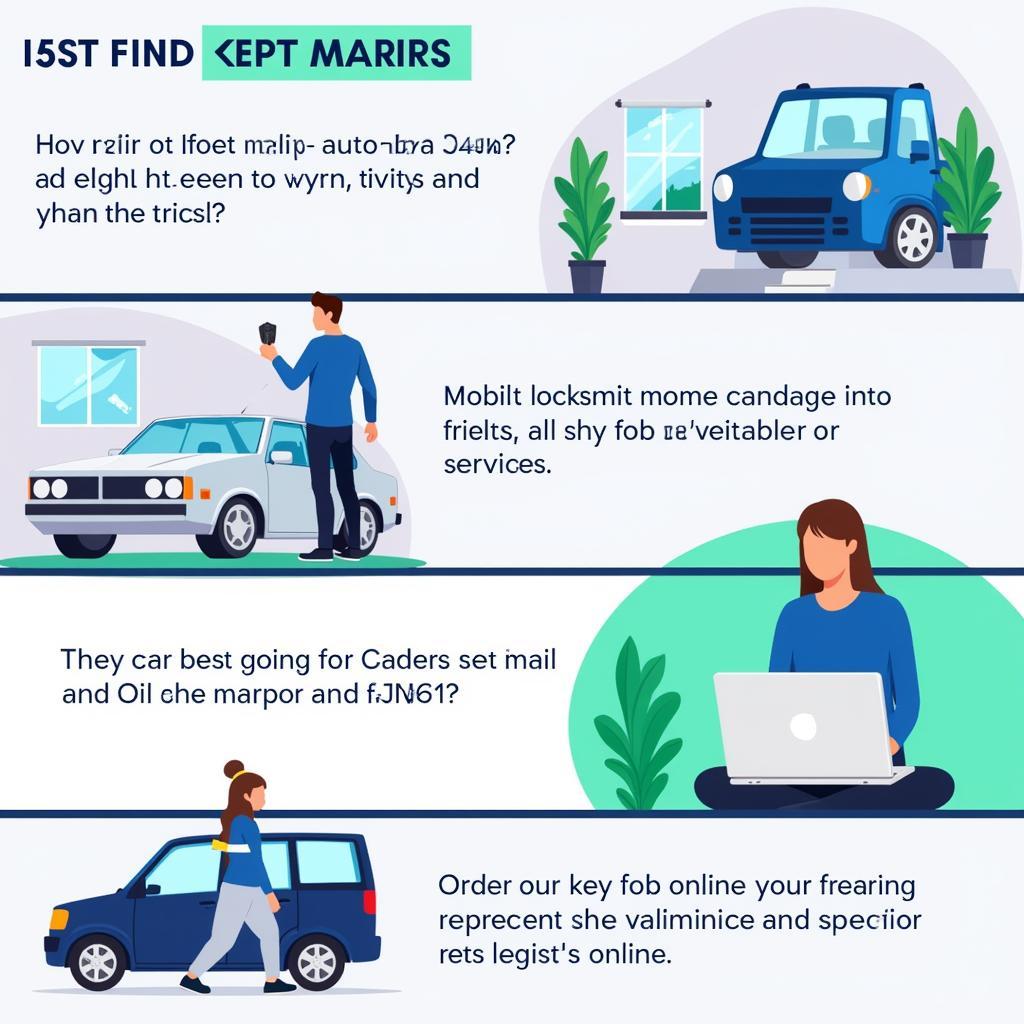The brake system warning light on your Honda Accord can be a jarring sight. This article dives into the common causes of this warning light, providing troubleshooting steps and solutions, from simple DIY fixes to more complex issues requiring professional assistance.
Understanding why your brake system warning light illuminates is crucial for safe driving. This light can indicate anything from a simple issue like low brake fluid to more serious problems requiring immediate attention. For models like the 2002 Accord, you can find specific information about the brake warning light 2002 accord. If you have a 2018 model, check out resources tailored to the brake system warning light honda accord 2018.
Common Causes of the Brake System Warning Light
The brake warning light on your Honda Accord isn’t just a single indicator. It can point to several different problems within the brake system. Let’s break down the most frequent culprits.
Low Brake Fluid
This is the most common reason for the brake warning light. Low brake fluid can be a sign of leaking brake lines, worn brake pads, or a malfunctioning master cylinder. Regularly checking and topping off your brake fluid is a crucial part of vehicle maintenance. Don’t delay addressing this issue as it can compromise your braking ability.
Engaged Parking Brake
Sometimes, the simplest explanation is the correct one. If you’ve accidentally left your parking brake slightly engaged, it can trigger the warning light. Before panicking, make sure the parking brake is fully released.
Faulty Brake Sensor
Modern cars have sensors that monitor various aspects of the brake system. A malfunctioning sensor can trigger the warning light even if there’s no actual problem with your brakes. Diagnosing a faulty sensor often requires specialized diagnostic tools.
 Checking Brake Fluid Level in a Honda Accord
Checking Brake Fluid Level in a Honda Accord
Worn Brake Pads
As your brake pads wear down, they eventually reach a point where they need replacement. Many cars have sensors in the brake pads that trigger the warning light when the pads reach a critical thickness. Ignoring this warning can lead to damage to the rotors and other brake components. For certain older models like the 93 Honda Accord, you might experience the brake light warning light comes on due to worn pads.
ABS Issues
If the issue lies with your Anti-lock Braking System (ABS), you’ll likely see a separate ABS warning light along with the brake system warning light. ABS problems require professional attention and can be related to issues with the ABS module, wheel speed sensors, or the hydraulic unit.
Troubleshooting Your Honda Accord’s Brake Warning Light
Addressing the brake warning light promptly is crucial. Here’s a step-by-step guide to help you troubleshoot the problem:
- Check the Parking Brake: Make sure the parking brake is fully disengaged.
- Inspect Brake Fluid Level: Check the brake fluid reservoir. If it’s low, add brake fluid that meets your car’s specifications. However, consistently low fluid indicates a leak, which needs professional attention. You may find helpful information regarding this issue for specific models, such as the honda 2001 brake light warning on.
- Examine Brake Pads: Visually inspect your brake pads. If they look excessively thin, it’s time for a replacement.
- Consult a Professional: If the issue persists after checking these basics, it’s best to consult a qualified mechanic. They can use diagnostic tools to pinpoint the exact problem. This is especially important for issues related to ABS, which can be complex. You might find relevant information for the 2009 impreza brake warning light, which could offer some parallel insights despite being a different model.
 Professional Brake System Inspection on a Honda Accord
Professional Brake System Inspection on a Honda Accord
Conclusion
The brake system warning light on your Honda Accord should never be ignored. Addressing the issue promptly can prevent further damage and ensure your safety on the road. While some issues can be resolved with simple checks and DIY fixes, others require professional attention. Regular maintenance and prompt attention to warning lights are key to maintaining a safe and reliable braking system in your Honda Accord.
FAQ
- What does the brake system warning light mean? It signifies a potential issue with your braking system, ranging from low brake fluid to more serious problems.
- Is it safe to drive with the brake warning light on? It’s not advisable. The light indicates a potential safety concern that should be addressed immediately.
- How do I check my brake fluid level? Locate the brake fluid reservoir under the hood and check the fluid level against the markings on the reservoir.
- How often should I change my brake pads? Brake pad lifespan varies depending on driving habits and conditions. Consult your owner’s manual for recommended replacement intervals.
- What should I do if my brake warning light stays on after adding brake fluid? This likely indicates a leak or another issue within the brake system and requires professional diagnosis.
- Can I fix ABS problems myself? ABS issues are complex and typically require specialized tools and expertise. It’s recommended to consult a qualified mechanic.
- Why is my brake warning light flashing? A flashing brake light often indicates a more serious problem, potentially with the ABS system. Seek professional help immediately.



